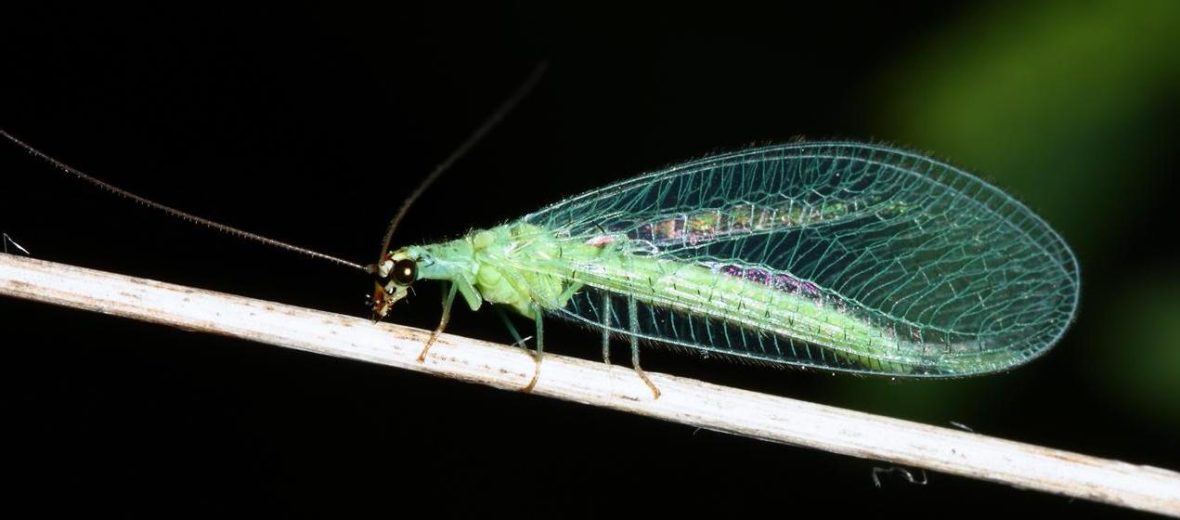
The green lacewing is part of a large family of insects totaling approximately 2,000 known species, found the world over, sans Antarctica. They can be found in fields, forests, gardens, tropical rainforests, chaparral, deserts, and swamps. Due to their abundance and global distribution, lacewings are not currently evaluated by the IUCN.
First the Stats…
Scientific name: Chrysopidae
Length: Up to .75 inch
Wingspan: Up to 2 inches
Lifespan: Up to 40+ days
Now on to the Facts!
1.) Lacewings are cathemeral (active both day and night)
2.) Many countries rear lacewings as a biological pest controller.
3.) Lacewings prey on a wide variety of plant-based pest insects, like mites, aphids, caterpillars, flies, leafhoppers, thrips, and eggs of butterflies. Some also consume honeydew, nectar, and pollen.
4.) In turn, lacewings are preyed on by larger insects, arachnids, ants, bats, dragonflies, and birds.
5.) Eating primarily aphids, lacewing larvae are sometimes called aphid lions.
But wait, there’s more on the green lacewing!
6.) Green lacewings communicate via vibrations made with their body. They can also release an unpleasant odor if threatened.
7.) Females lay up to 200 eggs each season.
Did you know…?
A lacewing can consume around 200 aphids in a single week.
8.) Lacewings are solitary and only come together to breed.
9.) The larvae injects digestive juices into the body of their victim. Then they lap up the dissolved insect.
10.) Adults live for up to 6 weeks.
Now a Short Green Lacewing Video!
Be sure to share & comment below! Also, check out the Critter Science YouTube channel. Videos added regularly!
Want to suggest a critter for me to write about? Let me know here.



